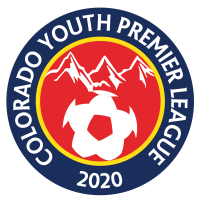Introduction
Risk management is a crucial component of any organization, especially those that deal with a community’s most valuable resource, its children. Therefore, at a youth soccer club, there needs to be a focus on the many aspects of risk management including warning signs for pedophiles, goal placement safety, environmental conditions, tournament safety tips, legal issues, and injuries. All coaches, volunteers, and board members should be required to complete a volunteer disclosure form and a background check. These documents are to be kept on file confidentially and all coaches, volunteers, and board members must complete a background check every year through a system of the clubs choosing. Risk management is an ongoing process and a job that is never done. In today’s fast paced world there are new and challenging risks that are constantly being presented. It is the club’s duty to make the members aware of some of the risk management issues. It is the clubs first and foremost important duty to promote the health and safety of the players.
Sexual Harassment policy
We stand with US soccer on sexual harassment. Sexual harassment has no place in Youth activities. Sexual harassment involving unwanted verbal or physical sexual advances or request for sexual favors from any supervisor, peer or any person attempting to victimize through interactions should be reported to the appropriate authorities. Follow the communication protocol to the best of your ability, the appropriate authorities may be the police in many instances.
Any charge of sexual harassment warrants a dismissal from the League
Code of Conduct for Coaches
- A coach will not allow any foul, abusive, or profane language on or around the field including before, during, or after a game.
- Coaches will be responsible for actions and comments of spectators on their sidelines.
- Referee
calls will be final.
- Please see disputes policy for grievances
- Any deviation from League policy will be dealt with severely and may result in suspension of coaching duties.
General Safety
I. Concussion Policy
- CASA requires all Club staff coaches to
take concussion training, and recommends parents and players do the same.
- Completion certificate for coaches must be turned into CASA prior to working as a coach (either volunteer or paid).
- CASA recommends that the clubs require a doctor’s clearance before that player is allowed to play or practice in any situation where a concussion is suspected.
- d) CASA encourages the use of the
following progression to return to play as adopted by the “Concussion in Sports
Group” at the CDC:
- ‘ Rest
- ‘ Aerobic exercise (e.g., stationary bicycle)
- ‘ Sport—specific training (e.g., running, skating)
- ‘ Non—contact drills (includes cutting and other lateral movements)
- ‘ Full contact controlled training
- Full contact game play
I. LIGHTNING PROTOCOL/ Emergency Plan
LIGHTNING –SAFETY
LIGHTNING SAFETY POLICY
The potential for lightning to strike an individual is increased in open areas such as a soccer field. CASA has the following lightning policy.
Any soccer coach, Director of Coaching from a club, has the authority to remove participating soccer players from any athletic field or venue when lightning is in the area. Since Colorado weather changes so quickly, it may be impractical to monitor local forecasts. In addition, most of the parks do not have lightning detection technology at the field locations. As such, all coaches are responsible to watch the weather at the athletic fields or venues.
In order to determine when to stop play, CASA will use the “Flash – To – Bang” calculation methodology as recommended by the National Athletic Trainers Association. When lightning is calculated to be within FIVE miles of an open field, all participants should move to a safe place away from the field. The coach, will use reasonable judgment to determine the safe place. The observer begins counting or timing when a flash of lightning is sighted. Counting or timing is stopped when the associated thunder is heard. Divide the number by five to determine the distance to the lightning flash. For example, a “flash to bang” of twenty seconds would be equal to four miles. If the observer notices that there is no thunder associated with a lightning storm, the observer should use reasonable judgment to determine whether the lightning is within three miles of an open, thus play is unsafe due to lightning danger. Such apps as “weather bug” may also be used to determine general distance of lightning. These should be used to determine within 8 miles.
When the coach or other designated person determines that play is unsafe due to lightning, the following emergency plan takes effect. Since field locations, sizes and equipment are not uniform, the coach or designated individual is responsible for communicating to all soccer players and coaches at the field location that play is unsafe due to lightning. The signal for stoppage of play is this communication. All players and coaches should move to a safe place away from the field using reasonable judgment. Players and coaches are not allowed back on the field for a minimum of thirty minutes from the time it is determined that the lightning is more than five miles from the open field.
